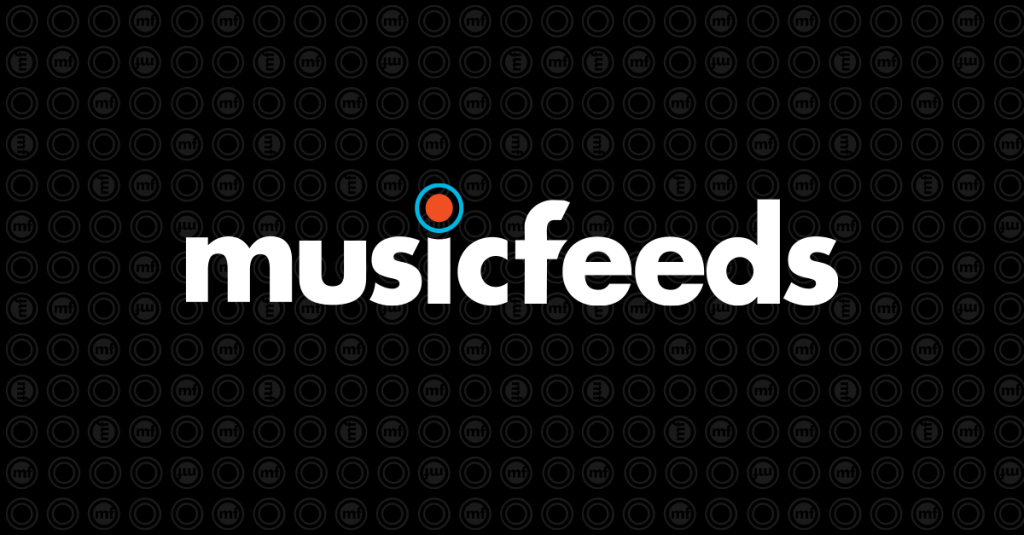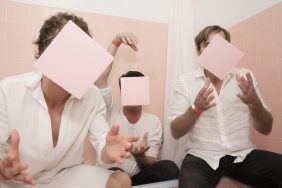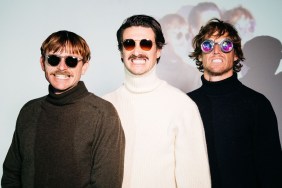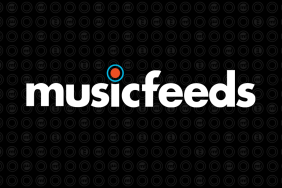Melbourne > < Brisbane: punk, art and after
The Ian Potter Museum of Art
University of Melbourne
Now that Australia’s post-punk forefather Nick Cave is palatable in the mainstream, lauded as “Our Nick” sidling alongside “Our Cate”, and the punk idols The Saints have returned to festivals such as All Tomorrow’s Parties, it is interesting to get back to the raw beginnings of this sub-culture in “Melbourne> < Brisbane: punk, art and after” showing at the Ian Potter Museum, Melbourne. Curated by David Pestorius the exhibition is bursting at the seams with cover art, record sleeves, zines, scrawled lyrics, tattered concert posters and DIY 7-inch records and a collection of fairly cryptic artworks justified by obscure art manifestos. However set inside Melbourne University, the space does lend an academic tone to the exhibition and at times it feels odd to see punk’s ephemera conserved in a traditional environment, resembling sacred relics encased in sealed glass cabinets. Powerful images or songs often speak for themselves without needing the labelling that can disconnect the effect of the work, pulling you away to read swathes of text rather than enjoying the piece itself.
Nevertheless Pestorius’ theme for the exhibition is strong, aligning the mid- 1970s art and music scene in Brisbane with Melbourne as a cultural exchange of ideas between the two cities. As Brisbane bands such as The Saints had exposure in Melbourne they influenced the burgeoning post-punk “Little Bands” scene such as The Boys Next Door (aka The Birthday Party). Visual artists were closely intertwined with the musicians creating posters; cover art and happenings outside of traditional avenues. There is strong sense of just how seminal this period of creativity was for Australia and its impact on the international stage. Robert Forster of The Go Betweens remembers The Saints’ Ed Kuepper “carving out something with his band that was world class. It hit everyone.”
While The Saints anthem “Stranded” (1976) hit a punk chord internationally, essential to its fabric was the oppressive experience of living in Premier Joh Bjelke-Petersen’s Brisbane. Bjelke-Petersen had banned public protests and speeches, encouraged vast development and was propped up by a corrupt police force, remaining in power for almost two decades from 1968 until 1987. The frustration of living in such a stagnant city provided grist to the mill for artists like Peter Tyndall. In 1980 Tyndall installed a room at the Institute of Modern Art in Brisbane with siren red lighting, filling it with newspapers ironically announcing “Screaming Teens Mob Paintings”, offering a dark commentary on Brisbane’s culturally barren landscape.
In late 1970s Melbourne things may not have been as politically dire as Brisbane but mainstream populist Carlton pub rock gigs, The Bee Gees, Michael Gudinski’s Mushroom records and Sunday night Countdown dominated the music scene. A post-punk aesthetic in visual arts began to brew alongside the music in understated places such as the Caulfield Institute of Technology, where artist Jenny Watson was teaching a young art student Nick Cave. Watson collaborated with Brisbane bands such as The Go Betweens, creating a band portrait for their first album “Send me a Lullaby” (1982). Mundanely entitled Robert Lindy Grant, nothing overtly suggests they are musicians. Watson’s palette is washed out with pastel pinks, brown and dark blues and her brush marks roughly scumbled. None of the band member’s gaze directly at the viewer but their dreamy expressions suits the tone of their melancholy pop. Featured alongside is Watson’s absurdist An Original Oil Painting, literally a canvas with black and white panels, with “An original oil painting” printed across it. Deliberately lacking in scale or technique it was intended as swipe at Australia’s art institutions for valuing traditional oil paintings over an above the conceptual art being produced at the time. In 1977 Watson held it on stage alongside a performance of The Boys Next Door at the Crystal Ballroom, St. Kilda, with signs imploring the audience “Let’s Talk About Art.” Watson notes that it was venues like the Crystal Ballroom “where both the best art and the best music were happening – known only to a minute audience with no power, no money and no influence. But . . . all of the references go back to those places.”
Back in Brisbane Forster described the art scene as: “heavily into Dada… it would be like walking into Europe in 1917.” The sense of DIY rough and ready designs produced on the spur of the moment was akin to how the musicians were working. Judi Dransfield Kuepper, photographed many of the bands but then attacked the images, disjointing limbs, fingers and fists into anarchic collages. The visual artists sought the urgency of the punk and post-punk bands live performances, turning exhibitions into 24-hour displays that had to be seen live or missed. Some 77 shows were staged for one day only between February and November in 1979. John Nixon was key in establishing independent art spaces in both Brisbane and Melbourne, holding exhibitions in car parks, McDonalds, his own apartment, Chinese restaurants- anywhere to circumvent the confines of formal institutions.
All the material exhibited reinforces the sense of the challenging, intellectual aesthetic of the punk and post-punk artists that railed against the safety of suburban, hills hoist Australia and the dearth of a critical culture. Despite the feeling that such an anarchic movement is ill at ease when exhibited in the White Cube space it took pains to avoid, it is worth viewing to witness what was undeniably a powder-keg of ideas that still cast a long shadow over Australia’s music and art scene today.
Details:
23 February – 16 May Tuesday to Friday 10am – 5pm: Saturday and Sunday 12 – 5pm (Free admission)
The Ian Potter Museum of Art, The University of Melbourne, Swanston Street (between Elgin and Faraday streets), Parkville, 3010











